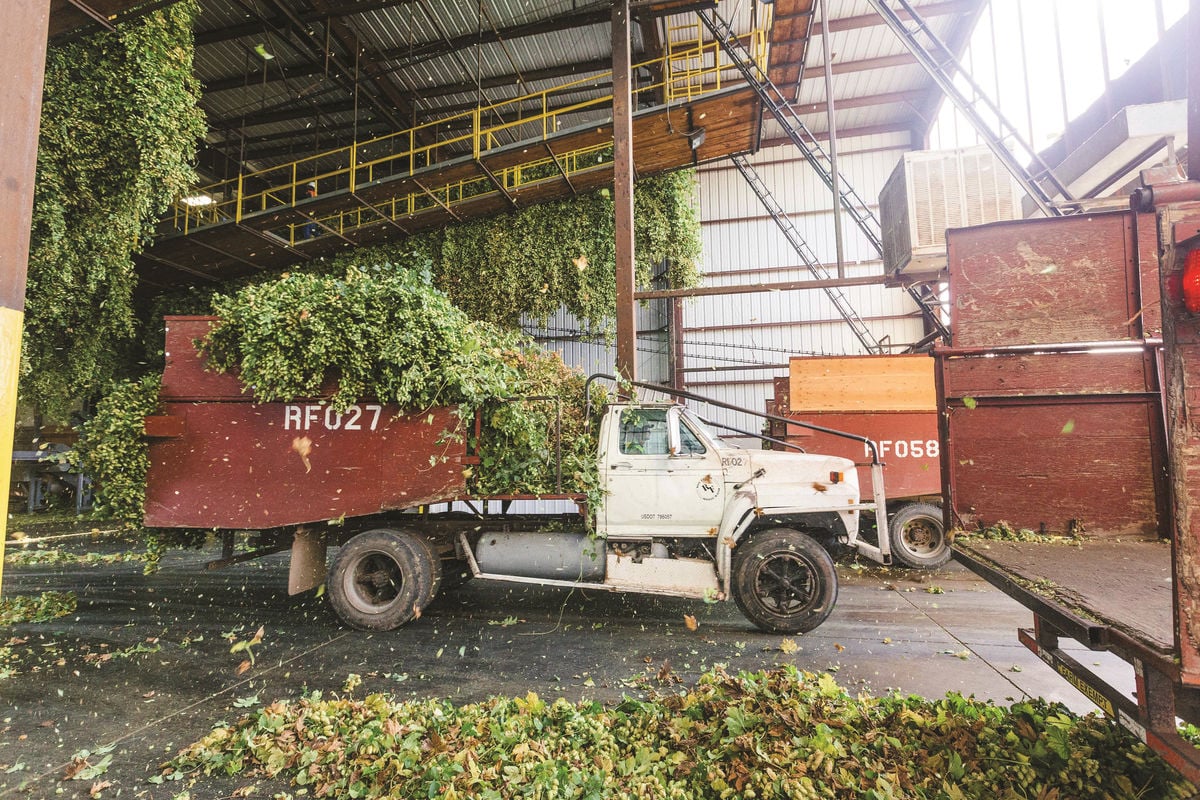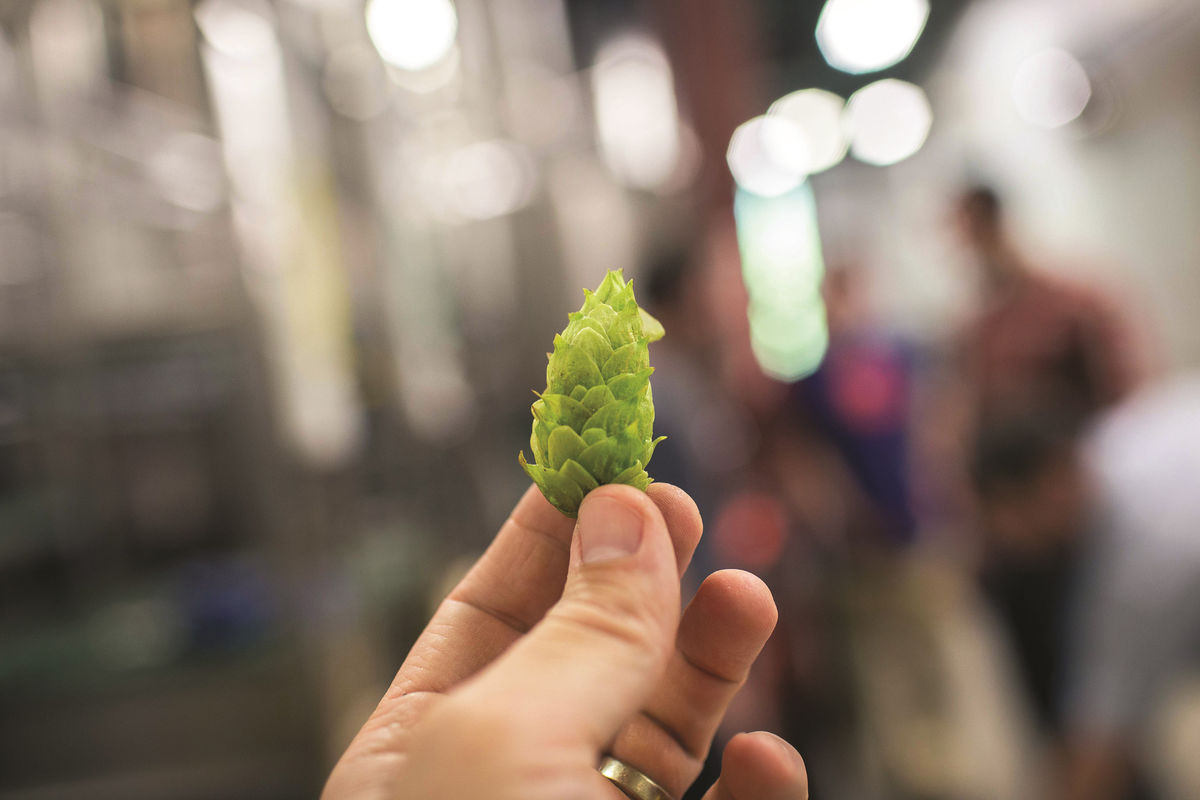Start 14-Day Trial Subscription
*No credit card required

The Hop Report: Trending Hops for 2020
Hops are a defining factor in any beer, and also often dictate what styles of beer and modes of brewing will be popular in the future. When there are shortages, brewers band together to weather the storm and share wisdom on innovative ways to cram more hop aroma and flavor into a 12-ounce can.
This cycle of experimentation and discovery often means that hops that have fallen under the radar for decades suddenly rise to worldwide acclaim. Other times, genetic modifications lead to brand new varietals, which immediately take the brewing world by storm. Let’s take a look at how 2019 played out on the hop frontier.
First, the big picture: According to the USDA’s forecasted hop harvest for 2019, Citra was the hop grown more than any other in Washington, Idaho and Oregon – America’s top hop growers.
Among the other top contenders were the classics – Cascade and Centennial along with Mosaic and Simcoe and… Pahto? More on that in a minute.
Most would categorize the 2019 hop harvest as a solid year for hops, with decent returns on hop oils and alpha acids, the potency of which varies seasonally. Early spring, especially in the Yakima region, was tough for baby hop crops, resulting in somewhat lackluster yields. Oregon hop growers also saw some of the worst flooding in recent memory in April, further contributing to lower yields than were expected. However, what did grow performed quite well, especially breeds like Chinook, El Dorado and Cashmere, which was featured in last year’s hop report.
Below is a list of rising star hops – some of which were made to suit the public’s taste and some of which the public’s palate has evolved to crave. Some you may be familiar with, having recently caught a wave of interest among the public, while others might be brand new.
Each of these hops represent the culmination of years, if not decades, of research and testing. They have been found ideal not only in flavor, but in growth rate, yield capacity, cone size, disease and weather resistance, ease of harvest and storage life. Now they’re ready for their time in the brewer’s spotlight, each vying for the chance to change the tastes of the beer-drinking public. Success would allow these hops to sit securely alongside the most influential hops of all time by pushing the boundaries of what craft beer can be.
In an age where breeders can play God with hops by imbuing them with all sorts of fanciful flavors, you can expect them to pay very close attention to what sort of beer styles and characteristics are trending, and then to breed accordingly. The hops on this list reflect what’s hot in the market currently and also a sign of where things are headed.
Zappa - Origin: United States
To be frank, this is an oddball hop. A member of the Neomexicanus hop variety, its flavor has been described as everything from tropical fruit surrounded by notes of peppery mint, savory character and Fruity Pebbles to simply: “the color purple.”
North America’s Neomexicanus hops are ripe for future exploration by breeders, as their properties differ significantly from European hops, so you might consider Zappa ahead of its time. Fitting, considering it’s named after the famously esoteric musician. If you were wondering, the Zappa estate has signed off on the naming rights.
Pahto - Origin: United States
Originally known as HBC 682, Pahto was renamed for the native name of Mt. Adams, Washington’s second-highest peak after Mt. Rainier. This hop is a high-yield, disease-resistant variety that is super high in alpha acid content – reaching up to 20 percent, making it great as a bittering hop. It is noted for its herbal, earthy and floral notes and smooth, clean bitterness. These characteristics make Pahto perfect for craft drinkers’ ongoing obsession with powerfully hopped brews with distinct flavors. As previously noted, this varietal was one of the most cultivated in 2019.

CTZ - Origin: United States
Along with Pahto, CTZ was another heavily planted but less-mentioned varietal this year. The “CTZ” stands for Columbus, Tomahawk and Zeus (also heavily grown in 2019), because these hops are pretty much interchangeable. The acronym is a result of copyright and patent issues surrounding the nearly identical characteristics of these hops, which have been gaining popularity since their development in the 1980s. Its origins are not fully known, but it’s generally believed to be partially derived from the English varietal Brewer’s Gold, which is known for its high alpha acid content.
Similar to the hops it was named for, CTZ is a great multipurpose breed, with clean, neutral bitterness, intense aromas of citrus, wood and spice and high alpha acids ranging up to 16 percent. It doesn’t take a ton of this hop to bitter up a brew, making it a classic choice for West Coast IPAs. CTZ and its genetic brethren have been used forever, but its utility in the kettle has brought it newfound popularity. You can find it in all sorts of beers, but among its greatest hits are Russian River’s Pliny the Elder and Firestone Walker’s Parabola.
Riwaka - Origin: New Zealand
An “it-girl” of New Zealand’s rising hop scene, Riwaka boasts an oil content nearly two times that of its parent hop, Saaz. It is further distinguished by a nearly even ratio of alpha and beta acids around 5 percent, culminating in full, ripe citrus notes well-suited for today’s juicy IPA climate. Milder notes of grapefruit and kumquat round out its flavor profile, which can also serve as a standalone, single hop show or liven up a brewer’s approach to a pilsner or pale ale.
The hop was originally introduced to the market in 1997, simply titled “D Saaz,” by HortResearch as part of its New Zealand Hops “with a difference” program. Judging by its rising popularity, its differences are what make it such a hot ticket item. Most notably, it has been used in the award-winning Hill Farmstead Brewery’s Susan.
Sabro - Origin: United States
The popularity of cocktail-themed beers has proven to be fertile ground for brewers and hop growers alike, and Sabro is a perfect example with its pina colada-type character surrounded by tropical, citrus notes. Short for the Spanish “sabroso,” meaning “delicious,” it first hit the scene in 2018, earning favor for its ability to impart coconut flavor to hop-forward beers, helping push the hop-head psyche further from pine and closer to fruit. Nearly 700 acres were devoted to growing Sabro in Washington alone – a sizable amount for a newcomer. Try it in Sixpoint’s Dabble, a Double IPA.
Idaho 7 - Origin: United States
Considering it doesn’t yet have a name reminiscent of mythological creatures or sacred native artifacts, it’s safe to say Idaho 7 has flown under the radar. It’s a good late-addition aromatic hop but is alpha-acidic enough to have some skin in the bittering game.
Some have likened it to Citra, with heavy, juicy notes of tropical and stone fruits woven into a background of marmalade, resinous pine and earthy black tea. Others have noted that its aroma is very reminiscent of marijuana, making it possible to label this a “dank” hop. It has been used to great effect in Night Shift Brewing’s One Hop This Time.

Strata - Origin: United States
This list of trendy hops wouldn’t be complete without a breed geared towards dankness. Often described as a mix of passion fruit and marijuana, Strata is ideal for the surge of interest in beers that smell and taste something like your hippy neighbor’s shed. But people are every bit as excited about this hop’s powerful fruity flavor, with shades of mango, passion fruit, melon, fresh strawberry and grapefruit as they are about the above-average level of terpenes, which impart that delicious “weedy” quality. Best of all, it’s versatile, working just as well in a stout as it does in a saison. You can find this hop in Bear Republic’s Strata Rebellion and Southern Lights Brewing’s Erik Estrata IPA.
The trendy IPA of 2020 is a multi-faceted blend of fruity and juicy qualities with a thick, vinous mouthfeel balanced by a hefty amount of bitterness. Each of those characteristics had their day as a featured, standalone element in years past. Now they’re a unified whole, ready to be built upon in new ways, the same way citrus hop notes led to the idea for “creamsicle” beers, which has given birth to a hop that incorporates all those qualities from the get-go. In a way, the ability to impart such a powerful array of flavor has revived the American zeal for “bigger and bolder,” which seemed to be on the decline in favor of more tempered, subtle approaches.
That’s not to take anything away from the brewers, however. These are complex beers brewed with incredible attention to details that most weren’t even aware of a few years ago. With hops such as Lotus, with its creamsicle qualities, or Riwaka’s uber-high yet balanced alpha and beta acids, brewers gain an even deeper level of control over their product, and, in turn, what’s old to the craft beer drinker becomes new again.
For brewers hoping to home in on a yet-untapped vein of flavor, take a look at what has already been done with fruit in food, and you may well happen upon something special that will ultimately inform the next generation of hop breeds. Take, for example, the key lime pie, which isn’t too far from becoming a style of beer unto itself. The best iterations of key lime pie-inspired beers currently have incorporated tropical hops, lactose and vanilla notes to better represent the mélange and consistency of the dessert treat. It is now advantageous to hop growers to double down on lime and vanilla qualities in hops.
From a broader perspective, consider what is popular outside of the beer realm and see if there’s a way you might be able to approximate its flavor and texture within a beer, a la Rosé wine and cannabis.
Though brewing will always be an art, the science behind today’s hop breeds are largely responsible for the epic variety of flavors at the drinker’s disposal, as well as the brewer’s ability to produce them.
All photos courtesy Flickr/Allagash Brewing Co.



